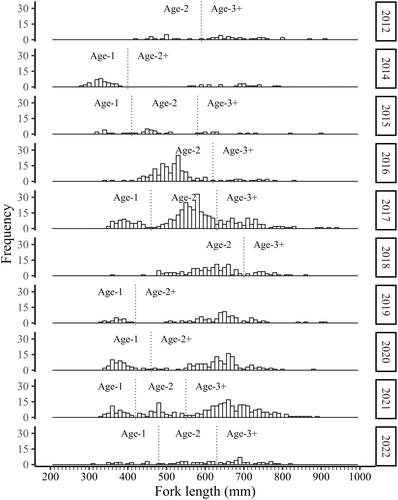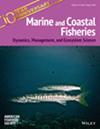Long-term trends in abundance and recruitment of Shortnose Sturgeon in the Altamaha River, Georgia
Abstract
Objective
The objective of this study was to estimate the population size and annual recruitment of Shortnose Sturgeon Accipenser brevirostrum in the Altamaha River estuary in Georgia, United States, during an 11-year period. The Shortnose Sturgeon is an endangered fish species that occupies rivers on the east coast of North America. Previous studies have suggested that the Altamaha River supports the largest population of Shortnose Sturgeon in the southern United States; however, the status of the population has not been assessed in 11 years.
Methods
We used entanglement gears to capture Shortnose Sturgeon in the Altamaha River estuary, marked them, and used an established statistical method (closed-population capture–mark–recapture models) to annually estimate total population size and age-1 recruitment from 2012 to 2022.
Result
We were able to estimate the size of age-1 cohorts in 7 of the 11 years of data collection. Point estimates of annual age-1 recruitment varied between 113 and 1021 individuals, and total population size varied between 452 (95% confidence interval [CI]: 116–2277) and 5054 individuals (95% CI: 2155–13,267).
Conclusion
Recruitment of age-1 juveniles was variable, suggesting that reproduction success is inconsistent between years in the Altamaha River. The results of this study, in combination with previous work, do not show any clear trends in Altamaha River Shortnose Sturgeon population abundance or recruitment. The population seems to be stable, but in the absence of historical population numbers, it is unclear whether the population should be considered recovered or is stagnated in its recovery.


 求助内容:
求助内容: 应助结果提醒方式:
应助结果提醒方式:


